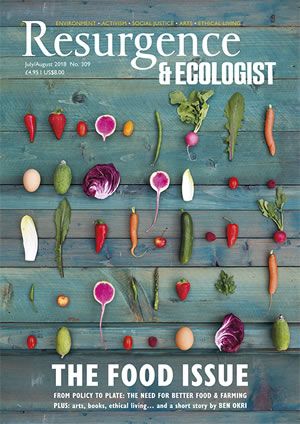Almost a hundred years ago the organic farming movement threw down the gauntlet and challenged industrial agriculture. Sir Albert Howard, his first wife, Gabrielle, and, following her death, his second wife, Louise, were the brave pioneers of this movement.
The Howards were a new breed. They merged the latest science with the ideals of peasant farming. Albert and Gabrielle fell deeply in love at the turn of the 20th century and forged a working relationship remarkable in the annals of science history. Side by side in the laboratory they united deeply held traditional values about Nature with the hard, cold facts of science.
By the 1980s, long after the Howards had died, the movement had gained public acceptance from many of the same corporations and government institutions that had called Albert Howard and his followers cranks and kooks. The myriad of followers hailed from both left and right of the political spectrum, attracting the support of green activists, neo-traditionalists, socialists, fascists and capitalists. High-profile luminaries, from Gandhi to the Prince of Wales, along with millions of consumers, have been counted as faithful adherents of organic farming. How did this come about?
In 1905 the government of India hired Albert and, soon after, Gabrielle as economic botanists. They worked in a new India-wide agricultural research station in Pusa, Bihar and developed new varieties of wheat. But they also attempted to solve India’s largest agricultural problem: how could small farmers who could not afford expensive chemical fertilisers and pesticides improve production and stave off plant disease using natural methods they could afford?
After gaining his own research centre in Indore, Albert devised a new scientific method of drawing nitrogen from the atmosphere through the natural bacteria in a compost pile. Treating the soil with this compost rejuvenated the humus and enabled the roots of the plants to absorb vital nutrients. All this was accomplished using commonly available plant material and only a small amount of manure as starter.
When Gabrielle tragically died of cancer in 1930, Albert retired to England, heartbroken. Gabrielle’s sister Louise had just retired as an agricultural adviser for the League of Nations in Geneva, and she met often with Albert to handle family affairs. After lengthy discussions on agriculture, they both soon realised that what worked in India could work for the whole world. They met again for a holiday in Italy to work together on a new book titled The Waste Products of Agriculture. They fell in love, and married a few years after Gabrielle’s death. Louise helped Albert fashion his vision for agricultural reform into a powerful and popular book called An Agricultural Testament, published in 1940. It quickly became the manifesto of the organic farming movement.
After Albert died in 1947, Louise carried on the battle for the health of the soil through her own herculean efforts. Along with the Soil Association and a host of other advocates like E.F. Schumacher, organic farming activists were a vital bridge between the earlier conservation movement and the modern environmental movement that arose after 1970. Louise Howard, largely unknown today, sustained a global network of organic farming activists who also advocated clean air and water, the protection of wildlife, and the urgent necessity of cutting back on deadly chemicals like DDT that poisoned our ecosystem. Her vital role in keeping these issues alive from the late 1940s to the late 1960s places her as arguably the single most important woman in the environmental movement. Even Rachel Carson drew largely from organic farming material that activists secretly provided to her for writing her seminal book, Silent Spring.
Little could Louise know at the time of her death in 1969 that the incremental efforts of gardeners, small farmers and small markets would, over the next few decades, reach a tipping point and swiftly convert not just millions of people, but also numerous governments and international organisations to the ideas of her late husband. She would have been surprised that authorities would from 1980 onwards transform the reach of organic farming so radically and bring the movement she once led in exile into a global system of agricultural management. Nor could she have foreseen that the accumulation of market forces would finally, through large corporate enterprises, produce organic farming on a monumental scale.
What does the future hold? First, the environmental need for organic farming is likely to drive its expansion in the future. Industrial agriculture takes a toll on water catchment areas. Wildlife and human health can suffer from the use of chemical fertilisers and pesticides. Industrial agriculture does not sequester carbon in soils as well as organic farming does, and this has implications for global warming.
The lessons from this science of the heart are many. The most important is that in order to have impact, science must connect with deeply held values. Today the public is divided over how far to push environmental protections. Often these debates suffer because the science behind them does not connect with people at the local level, or they present only scientific modelling that is overly abstract and disconnected from spirituality.
The Howards understood how to connect science with the heart. Albert Howard attempted to modernise the values of peasant farmers who felt a profound connection to the land and who handed down traditions of husbandry from generations of peasant farmers in Europe, India and China. Peasant farmers provided examples of how humans could sustain agriculture on the same plot of land for thousands of years without exhausting the soil. The Howards wanted to place modern agriculture on the same footing. They successfully modernised and systematised ecological values into the modern farm economy and blazed a path for the future that revealed how science, ecology and tradition can thrive together.






